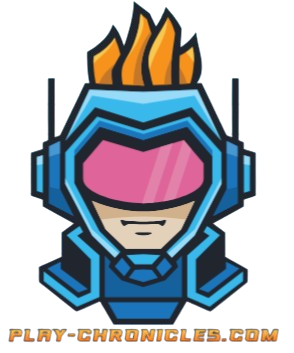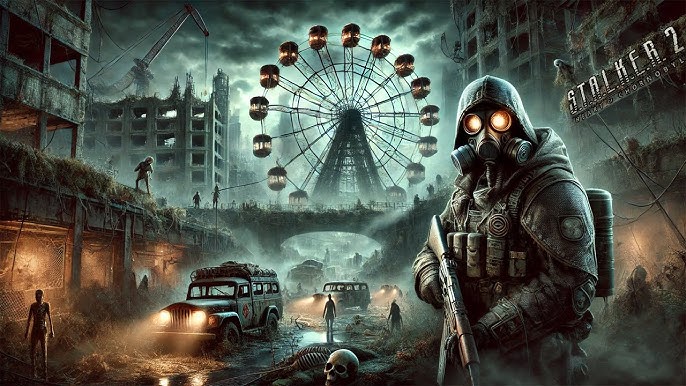The Legacy of the S.T.A.L.K.E.R. Series
The S.T.A.L.K.E.R. series began its journey in the early 2000s, crafted by the Ukrainian development team GSC Game World. Inspired by the novel “Roadside Picnic” and Andrei Tarkovsky’s film “Stalker,” the series carved a unique niche within the gaming industry by fusing survival horror, first-person shooter, and role-playing game (RPG) elements. This distinctive blend set the S.T.A.L.K.E.R. games apart, offering players a complex narrative and an immersive experience in a post-apocalyptic environment—the Chernobyl Exclusion Zone.
The original entry, S.T.A.L.K.E.R.: Shadow of Chernobyl, released in 2007, established the tone and foundation for future titles. Players were not only faced with formidable opponents, but also with the harsh realities of the Zone, which included anomalies and mutant creatures. This combination created an atmosphere of tension and uncertainty that has captivated audiences and garnered a loyal fanbase over the years. The game’s open-world design encouraged exploration and experimentation, allowing players to approach objectives in various ways, further enriching the gameplay experience.
As subsequent titles, including S.T.A.L.K.E.R.: Clear Sky and S.T.A.L.K.E.R.: Call of Pripyat, expanded upon the original story, they introduced new mechanics, improved graphics, and deeper lore. These developments solidified the series’ reputation for its detailed world-building and haunting storytelling. Moreover, the impact of S.T.A.L.K.E.R. extended beyond its immediate success, influencing many contemporary games that explore themes of survival and post-apocalyptic narratives.
The fervor surrounding the S.T.A.L.K.E.R. series has only intensified in recent years, evidenced by the ongoing interest in its cult classic status. With the announcement of S.T.A.L.K.E.R. 2: Heart of Chornobyl, fans are eagerly anticipating a return to the Zone, further solidifying the series’ legacy in video game history.
The Development Journey of S.T.A.L.K.E.R. 2
The journey of S.T.A.L.K.E.R. 2: Heart of Chornobyl has been marked by significant challenges and notable resilience from both the developers at GSC Game World and the devoted fanbase. After the success of the original trilogy, the announcement of a sequel generated immense anticipation. However, the path to release has seen a series of unexpected hurdles, significantly influenced by geopolitical events, particularly the ongoing conflict in Ukraine, which saw GSC Game World adjusting its operations and timelines amidst the turmoil.
Initially announced in 2010, development of S.T.A.L.K.E.R. 2 faced numerous setbacks which ultimately led to a prolonged hiatus. After a period of uncertainty, GSC Game World announced a revival of the project in 2018, once again igniting hope among fans. The studio embraced modern game development advancements, signaling a commitment to leverage cutting-edge technology and improve gameplay mechanics. These efforts included enhancements in graphics, artificial intelligence, and open-world design, ultimately aiming to create a rich, immersive environment that reflects the harsh realities of the Zone.
Throughout this tumultuous journey, the support of the community has remained unwavering. Fans have shown extraordinary patience, engaging in discussions, sharing their enthusiasm on social media, and providing feedback that has helped shape the game. This collaboration has encouraged GSC Game World to stay true to the franchise’s roots while innovating in ways that resonate with both new players and veterans of the series.
As GSC Game World nears the launch of S.T.A.L.K.E.R. 2, the development team’s dedication to overcoming adversity is evident. By prioritizing quality and community feedback, the studio enhances the overall user experience, making the eventual return to the Zone not just a release, but a celebration of resilience, creativity, and above all, a shared passion for the S.T.A.L.K.E.R. universe.
New Features and Innovations in Heart of Chornobyl
S.T.A.L.K.E.R. 2: Heart of Chornobyl is set to redefine the franchise with a variety of innovative features and enhancements that cater to both veterans and newcomers. One of the most prominent advancements lies in the realm of graphics and visual fidelity. Utilizing cutting-edge technology, the game promises to deliver breathtakingly detailed environments and lifelike character animations. The atmospheric effects, such as dynamic weather systems and enhanced lighting, further immerse players in the hazardous and mysterious Zone, elevating the overall gaming experience.
In addition to visual improvements, gameplay mechanics have undergone significant fine-tuning. Developers have implemented a more intuitive control system, making interactions smoother and more responsive. These adjustments not only streamline combat but also enhance other aspects of gameplay, such as inventory management and crafting. As a result, players can expect a more engaging and user-friendly experience as they navigate the challenges of the Zone.
Open-world exploration, a hallmark of the S.T.A.L.K.E.R. series, has also received extensive upgrades. In Heart of Chornobyl, players will find an expansive world that is both richly detailed and intricately connected. New traversal options allow for more fluid movement through the diverse terrain, whether players are traversing crumbling buildings or navigating dense forests. The interconnectedness of different zones offers a sense of progression that encourages thorough exploration, with hidden secrets and lore waiting to be uncovered.
Furthermore, S.T.A.L.K.E.R. 2 introduces an innovative narrative structure that emphasizes player choice. The story branches in a more interactive manner, providing players with meaningful decisions that affect the game’s outcome. This feature not only enhances replayability but also allows for a personalized journey, making each playthrough a unique experience. By integrating these advancements, S.T.A.L.K.E.R. 2 aims to deliver a rich and captivating adventure in the heart of the Chornobyl Zone.
What It Means for Fans and the Gaming Community
The release of S.T.A.L.K.E.R. 2: Heart of Chornobyl holds significant emotional importance for both long-time fans and newcomers to the franchise. For many gamers, the original S.T.A.L.K.E.R. series has left an indelible mark on the gaming landscape, combining a compelling narrative with an open-world experience steeped in atmosphere and horror. After years of anticipation and development challenges, the impending release has stirred excitement among fans, creating a palpable sense of hope and nostalgia.
The expectations surrounding S.T.A.L.K.E.R. 2 are considerable. The gaming community has speculated on various aspects of the new installment, from graphics and gameplay mechanics to story intricacies. Fans are particularly eager to see how the developers will expand on the franchise’s unique features, such as its deep lore and immersive environment. With the emergence of new gaming technologies, the hope is that the sequel will not only honor the original games but also provide a fresh experience that can attract a new generation of players.
Moreover, community reactions to pre-release trailers and teasers have been overwhelmingly positive, generating buzz that speaks to the game’s anticipated impact on the first-person shooter genre. Platforms like social media and gaming forums have become spaces for discussion, analysis, and even fan art, showcasing the vibrant engagement of the community. This involvement underscores the role of the fan base in shaping the game’s narrative and marketing direction, contributing to a shared sense of ownership over the franchise’s legacy.
In a broader context, the success of S.T.A.L.K.E.R. 2 could influence future design philosophies in the gaming industry. By understanding fan desires and preferences, developers may continue to innovate while maintaining core elements of gameplay, thus strengthening the bond between creators and players. This evolving relationship highlights the importance of fan engagement in the ongoing narrative of video gaming as an art form.


